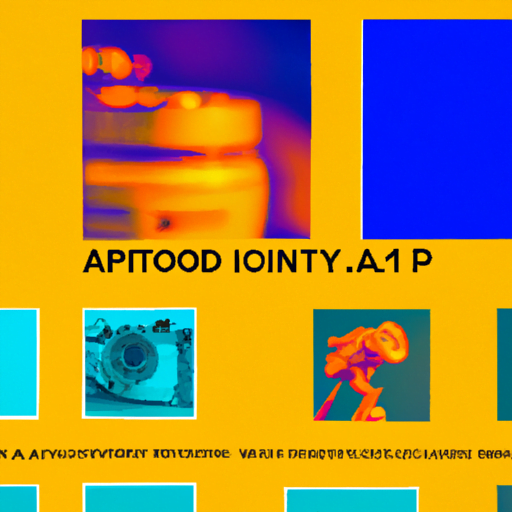
-
Table of Contents
Designing News and Content Interfaces

In today’s digital age, news and content consumption has shifted from traditional print media to online platforms. With the rise of social media and mobile devices, people have access to an overwhelming amount of information at their fingertips. As a result, designing effective news and content interfaces has become crucial to engage and retain users. In this article, we will explore the key principles and best practices for designing news and content interfaces that provide a seamless and enjoyable user experience.
The Importance of User-Centered Design
When it comes to designing news and content interfaces, it is essential to prioritize user-centered design. Understanding the needs, preferences, and behaviors of your target audience is crucial for creating interfaces that resonate with them. By putting the user at the center of the design process, you can ensure that your interface meets their expectations and provides a positive experience.
One way to achieve user-centered design is through extensive user research. Conducting surveys, interviews, and usability tests can provide valuable insights into user preferences and pain points. By gathering data and feedback directly from your target audience, you can make informed design decisions that align with their needs.
Designing for Information Hierarchy
When designing news and content interfaces, it is important to consider the information hierarchy. Users should be able to quickly and easily find the most important and relevant information. By organizing content in a hierarchical manner, you can guide users through the interface and help them navigate effectively.
One effective way to establish information hierarchy is through the use of headings and subheadings. Clear and descriptive headings not only make the content scannable but also improve search engine optimization (SEO). By using appropriate heading tags, such as
,
, etc., you can signal the importance of each section and help users understand the structure of the content.
Another important aspect of information hierarchy is the use of visual cues. By using visual elements such as typography, color, and spacing, you can draw attention to important information and guide users’ focus. For example, using larger font sizes or bold typography for headlines can make them stand out and attract users’ attention.
Responsive Design for Multi-Device Accessibility
In today’s mobile-first world, it is crucial to design news and content interfaces that are accessible across multiple devices. Responsive design ensures that the interface adapts to different screen sizes and resolutions, providing a consistent experience for users regardless of the device they are using.
Responsive design involves using flexible layouts, fluid images, and media queries to adjust the interface based on the device’s screen size. By designing interfaces that are responsive, you can ensure that users can access and consume content seamlessly, whether they are using a desktop computer, tablet, or smartphone.
One example of a news website that excels in responsive design is The New York Times. Their website adapts to different screen sizes, providing an optimal reading experience on any device. The content is rearranged and resized to fit the screen, ensuring that users can easily navigate and consume news articles.
Visual Hierarchy and Typography
Visual hierarchy plays a crucial role in designing news and content interfaces. By establishing a clear visual hierarchy, you can guide users’ attention and help them navigate through the interface effectively.
Typography is a key element in creating visual hierarchy. Choosing the right fonts, font sizes, and font weights can help differentiate between different levels of information. For example, using a larger font size for headlines and a smaller font size for body text can make it easier for users to distinguish between the two.
Another important aspect of typography is readability. The text should be legible and easy to read, regardless of the device or screen size. Choosing fonts that are optimized for readability, such as sans-serif fonts, can enhance the user experience and make the content more accessible.
Case Study: Medium
Medium is a popular online publishing platform that focuses on long-form content. It is known for its clean and minimalist design, which allows users to focus on the content without distractions.
One of the key design principles of Medium is its emphasis on typography. The platform uses a combination of serif and sans-serif fonts to create a visually appealing and readable interface. The font sizes and line spacing are carefully chosen to ensure optimal readability.
Medium also utilizes a responsive design approach, making the interface accessible across different devices. The content adapts to the screen size, providing a seamless reading experience on desktops, tablets, and smartphones.
Furthermore, Medium incorporates social features into its interface, allowing users to highlight and comment on specific sections of the content. This not only encourages user engagement but also provides valuable feedback to the authors.
Best Practices for News and Content Interfaces
Here are some best practices to consider when designing news and content interfaces:
- Keep the interface clean and clutter-free to minimize distractions and allow users to focus on the content.
- Use clear and descriptive headings to establish information hierarchy and guide users through the interface.
- Utilize responsive design to ensure accessibility across different devices and screen sizes.
- Choose fonts and typography that are optimized for readability and legibility.
- Incorporate visual cues, such as color and spacing, to draw attention to important information.
- Include social features to encourage user engagement and interaction.
Summary
Designing news and content interfaces requires a user-centered approach that prioritizes the needs and preferences of the target audience. By understanding the importance of information hierarchy, responsive design, visual hierarchy, and typography, designers can create interfaces that provide a seamless and enjoyable user experience.
Case studies like Medium demonstrate how effective design principles can be applied to create engaging and accessible interfaces. By following best practices such as keeping the interface clean, using clear headings, and incorporating visual cues, designers can create news and content interfaces that captivate and retain users.
Ultimately, the goal of designing news and content interfaces is to provide users with a platform that allows them to easily access and consume information. By focusing on user-centered design and implementing best practices, designers can create interfaces that meet the needs of their target audience and deliver a positive user experience.
